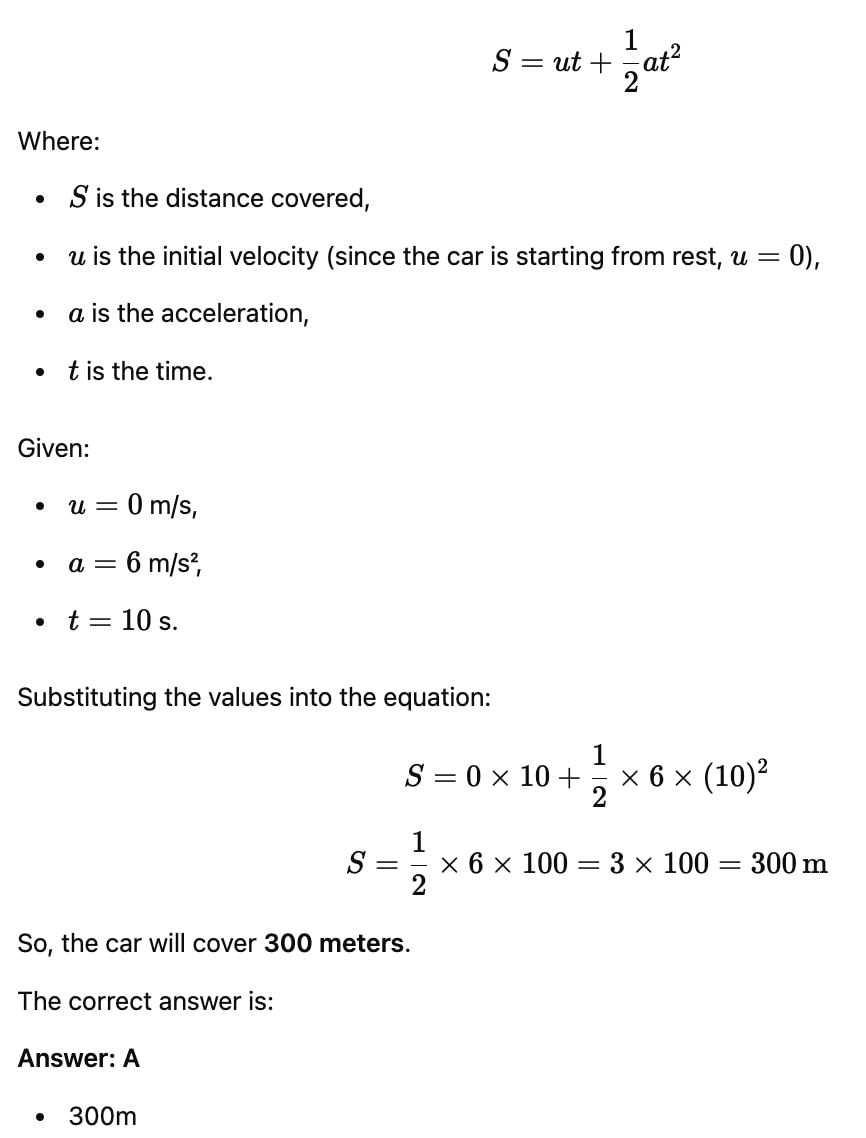All questions of Motion for Grade 9 Exam
Can you explain the answer of this question below:The displacement covered by a seconds’ hand of radius r in a clock after one revolution is:- A:360 degree
- B:zero
- C:3r
- D:2r
The answer is b.

|
Piyush Srivastava answered |
What is the average velocity of a car that moved 60 km in 3 hours?
- a)60 km/h
- b)20 km/h
- c)30 km/h
- d)10 km/h
Correct answer is option 'B'. Can you explain this answer?
|
|
Kamakshi Singh answered |
To calculate the average velocity of a car that moved 60 km in 3 hours, we need to use the formula:
Average Velocity = Total Distance/Total Time
Substituting the given values in the formula, we get:
Average Velocity = 60 km/3 hours
Simplifying this expression, we get:
Average Velocity = 20 km/h
Therefore, the average velocity of the car is 20 km/h.
Explanation
The average velocity of an object is the total distance covered by the object divided by the total time taken to cover that distance. In this case, the car covered a distance of 60 km in a time of 3 hours. Dividing the total distance by the total time gives us the average velocity of the car, which is 20 km/h.
Conclusion
The average velocity of a car that moved 60 km in 3 hours is 20 km/h. It is important to remember that velocity is a vector quantity, which means it has both magnitude and direction. In this case, since no direction is given, we assume that the car travelled in a straight line.
The SI unit for speed is- a)km/hour
- b)m/s
- c)cm/min
- d)none of the above
Correct answer is 'B'. Can you explain this answer?
|
|
Shubham Unni answered |
The SI unit for speed is meter per second (m/s).
Explanation
Speed is defined as the distance traveled by an object in a given time. It is a scalar quantity and is measured in units of distance per time. The SI unit of distance is meter (m) and the SI unit of time is second (s). Therefore, the SI unit of speed is meter per second (m/s).
For example, if a car travels a distance of 100 meters in 10 seconds, its speed can be calculated as:
Speed = Distance/Time
= 100 meters/10 seconds
= 10 meters per second (m/s)
Therefore, the speed of the car is 10 m/s.
Conclusion
In conclusion, the SI unit for speed is meter per second (m/s). It is important to use the correct units when measuring speed to ensure consistency and accuracy in calculations.
The SI unit for speed is- a)km/hour
- b)m/s
- c)cm/min
- d)none of the above
Correct answer is option 'B'. Can you explain this answer?
|
|
Anita Menon answered |
1 km/ h = ________ m/s
- a)3/50
- b)18/5
- c)50/3
- d)5/18
Correct answer is option 'D'. Can you explain this answer?
|
|
Amrutha Mukherjee answered |
To convert km/h to m/s, we need to use the following conversion factor:
1 km/h = 1000 m/3600 s = 5/18 m/s
So, to convert 1 km/h to m/s, we simply multiply it by 5/18.
Solution
Given, 1 km/h = ?
We need to convert it to m/s.
1 km/h × 5/18 = 5/18 m/s
Therefore, the correct option is (d) 5/18.
Which of the following is a correct measure of velocity?
- a)30 s
- b)30 m/s
- c)30 South
- d)30 m/s, South
Correct answer is option 'D'. Can you explain this answer?
|
|
Pooja Shah answered |
-
30 s: This is a measure of time, not velocity.
-
30 m/s: This is a measure of speed, not velocity, because it does not include a direction.
-
30 South: This describes a direction but lacks the magnitude (speed), so it is not a complete measure of velocity.
-
30 m/s, South: This provides both magnitude (30 m/s) and direction (South), making it a complete measure of velocity.
A car moved 60 km East and 90 km West. What is the distance?- a)30 km
- b)60 km
- c)90 km
- d)150 km
Correct answer is 'D'. Can you explain this answer?
|
|
Tanvi Chauhan answered |
To find the distance covered by the car, we need to calculate the net displacement.
Net displacement = Total distance covered in the East direction - Total distance covered in the West direction
Total distance covered in the East direction = 60 km
Total distance covered in the West direction = 90 km
Net displacement = 60 km - 90 km = -30 km (negative sign indicates that car moved in the opposite direction)
Distance covered by the car = Magnitude of net displacement = | -30 km | = 30 km
Therefore, the correct option is (a) 30 km.
How far will a car travel in 25 min at 12 m/s?
- a)24 km
- b)10 km
- c)18 km
- d)14 km
Correct answer is option 'C'. Can you explain this answer?

|
Molik answered |
A body is said to be in non-uniform motion if it travels- a)Equal distance in unequal interval of time
- b)Equal distance in equal interval of time
- c)Unequal distance in unequal interval of time
- d)Unequal distance in equal interval of time
Correct answer is option 'D'. Can you explain this answer?
|
|
Vikram Khanna answered |
Can you explain the answer of this question below:An ant moves from one corner of a hall to the diagonally opposite corner. If the dimension of the hall are 8 m x 6 m, the displacement of the ant is :
- A:
10 m
- B:
14 m
- C:
28m
- D:
2 m
The answer is a.
An ant moves from one corner of a hall to the diagonally opposite corner. If the dimension of the hall are 8 m x 6 m, the displacement of the ant is :
10 m
14 m
28m
2 m
|
|
Nilanjan Ghosh answered |
Dimensions of hall = 8 m x 6 m
To find:
Displacement of the ant
Solution:
We can use the Pythagorean theorem to find the displacement of the ant. According to the theorem, in a right-angled triangle, the square of the hypotenuse (the longest side) is equal to the sum of the squares of the other two sides.
Let us consider the hall as a rectangle ABCD, where AB = 8 m and BC = 6 m. The ant moves from A to C, which is the diagonally opposite corner.
We can draw a right-angled triangle ACD, where AC is the hypotenuse, AD is one side (which is equal to AB), and CD is the other side (which is equal to BC).
Using the Pythagorean theorem, we have:
AC^2 = AD^2 + CD^2
Substituting the values, we get:
AC^2 = 8^2 + 6^2
AC^2 = 64 + 36
AC^2 = 100
AC = √100
AC = 10 m
Therefore, the displacement of the ant is 10 m.
Answer:
a) 10 m
Speed of 90 km/h when expressed in m/s is- a)2.5
- b)90000
- c)250
- d)25
Correct answer is option 'D'. Can you explain this answer?

|
Saurabh Kumar answered |
Can you explain the answer of this question below:The speed at any instant of time is known as
- A:
velocity
- B:
given speed
- C:
average speed
- D:
instantaneous speed
The answer is d.
The speed at any instant of time is known as
velocity
given speed
average speed
instantaneous speed

|
Gunjan Lakhani answered |
On a velocity-time graph, a horizontal straight line corresponds to motion at- a)constant velocity
- b)zero velocity
- c)increasing velocity
- d)decreasing velocity
Correct answer is option 'A'. Can you explain this answer?
|
|
Arun Sharma answered |
An external influence which changes or tends to change the state of rest or uniform motion of body or its dimensions is called:- a)momentum
- b)force
- c)moment of force
- d)pressure
Correct answer is 'B'. Can you explain this answer?
|
|
Ananya Das answered |
If a moving body comes to rest, then its acceleration is______.
- a)Positive
- b)Both of these depending upon the initial velocity
- c)Constant
- d)Negative
Correct answer is option 'D'. Can you explain this answer?
|
|
Karthik Namboothiri answered |
Can you explain the answer of this question below:An athlete uniformly increases his speed from rest at the rate of 1 m/s2. The time taken to complete 200 m race is:
- A:
10 s
- B:
14 s
- C:
5 s
- D:
20 s
The answer is d.
An athlete uniformly increases his speed from rest at the rate of 1 m/s2. The time taken to complete 200 m race is:
10 s
14 s
5 s
20 s

|
Ashish Saha answered |
Can you explain the answer of this question below:An object travels 20 m in 5 sec and then another 40 m in 5 sec. What is the average speed of the object?
- A:
6 m/s
- B:
2 m/s
- C:
12 m/s
- D:
0 m/s
The answer is a.
An object travels 20 m in 5 sec and then another 40 m in 5 sec. What is the average speed of the object?
6 m/s
2 m/s
12 m/s
0 m/s

|
Learning Education answered |
Choose the correct option:- a)distance is a scalar, velocity is a vector , acceleration is a vector.
- b)distance is a vector, velocity is a scalar, acceleration is a vector.
- c)distance is a vector, velocity is a vector, acceleration is a vector.
- d)distance is a scalar, velocity is a vector, acceleration is a scalar.
Correct answer is 'A'. Can you explain this answer?
|
|
Raghav Bansal answered |
- Distance is a scalar quantity that refers to "how much ground an object has covered" during its motion.
- Acceleration is a vector quantity that is defined as the rate at which an object changes its velocity.
- Velocity is a vector quantity that refers to the speed of an object in a particular direction.
A boy throws a ball up and catches it when the ball falls back. In which part of the motion the ball is accelerating?- a)During downward motion
- b)When the ball comes to rest
- c)During upward motion
- d)When the boy catches the ball
Correct answer is 'A'. Can you explain this answer?
|
|
Hansa Sharma answered |
- When the ball moves upward, the force of gravitation is acting in the opposite direction of the ball that is why in that case acceleration is negative or in other words deceleration takes place.
- But when the ball is moving downwards the force of gravitation is in the same direction of the motion of the ball thus acceleration takes place in this case.
The ratio of C.G.S. to M.K.S. unit of acceleration is:- a)1:10
- b)1:1
- c)1:100
- d)10:1
Correct answer is 'C'. Can you explain this answer?
|
|
Vikram Khanna answered |
Name the instrument used to measure instantaneous speed of a vehicle- a)multimeter
- b)ammeter
- c)speedometer
- d)accelerator
Correct answer is option 'C'. Can you explain this answer?
|
|
Anita Menon answered |
The area under the speed-time graph gives the ________.- a)velocity
- b)distance
- c)acceleration
- d)time
Correct answer is 'B'. Can you explain this answer?

|
Trisha Vashisht answered |
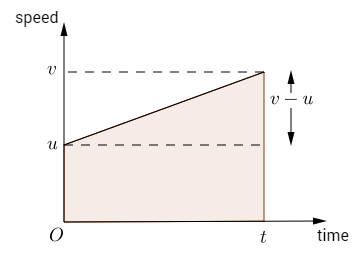
- When calculating the area under a speed-time graph, you are essentially finding the total distance traveled by an object over a certain period of time.
- This is because the area under a speed-time graph represents the total distance covered by an object as it moves at varying speeds.
- By finding the area under the curve on a speed-time graph, you can determine the total distance traveled by the object during that time interval.
Can you explain the answer of this question below:If a person walked at 2 m/s for 12 s he/she would travel a distance of
- A:
24 m
- B:
6 m
- C:
4 m
- D:
none of the answers
The answer is a.
If a person walked at 2 m/s for 12 s he/she would travel a distance of
24 m
6 m
4 m
none of the answers

|
Piyush Srivastava answered |
If car A is at 40 km/h and car B is at 10 km/h in the opposite direction, what is the velocity of the car A relative to the car B?
- a)40 km/h
- b)50 km/h.
- c)10 km/h
- d)30 km/h
Correct answer is option 'B'. Can you explain this answer?

|
Hiral Datta answered |
Find the average speed of a bicycle if it completes two round of a circular track of radius 140m twice in 5min 52 sec.- a)10m/s
- b)5m/s
- c)2m/s
- d)4m/s
Correct answer is option 'B'. Can you explain this answer?
|
|
Rohit Sharma answered |
circumfarance

Time taken to cover the distance = t = 5 min 52 sec = 352 sec
Since it complete 2 rounds, therefor distance it travels is 2 times of circumference.



In a distance-time graph, if the line is horizontal, then the object is:- a)Accelerating
- b)Speeding up
- c)At rest
- d)Slowing down
Correct answer is option 'C'. Can you explain this answer?

|
Destroyed answered |
Can you explain the answer of this question below:A man is moving with 36 kmph. The time of reaction is 0.9 seconds. On seeing an obstacle in the path, he applies brakes and decelerates at 5 m/s2, the total distance covered before he stops is:- A:19 m
- B:17 m
- C:16 m
- D:18 m
The answer is a.
|
|
Sarita Reddy answered |
Can you explain the answer of this question below:A man leaves his house at 7:30 a.m. for a morning walk, and returns back at 8:15 a.m. after covering 3 km. Is displacement in this time is:- A:2 km
- B:Zero
- C:8 km
- D:4 km
The answer is b.
|
|
Amit Kumar answered |
The S.I. unit of acceleration is:- a) ms2
- b)ms
- c)ms-2
- d)m
Correct answer is option 'C'. Can you explain this answer?
|
|
Shambhavi Singh answered |
Acceleration is defined as the rate of change of:- a)Distance
- b)Velocity
- c)Speed
- d)Displacement
Correct answer is option 'B'. Can you explain this answer?
|
|
Anita Menon answered |
Equations of motion can be used for a body having- a)uniform motion
- b)non-uniform motion
- c)uniform acceleration
- d)non-uniform acceleration
Correct answer is option 'C'. Can you explain this answer?
|
|
Ananya Das answered |
The area enclosed by velocity-time graph and the time axis will be equal to the magnitude of- a)displacement
- b)speed
- c)acceleration
- d)distance
Correct answer is option 'A'. Can you explain this answer?
|
|
Ishaan Chauhan answered |
Derivation:
Conclusion:
The slope of the distance-time graph is:- a)Distance
- b)acceleration
- c)Speed
- d)Displacement
Correct answer is option 'C'. Can you explain this answer?
|
|
Sarita Reddy answered |
Which of the following graphs show that the body is at rest?- a)
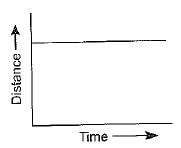
- b)
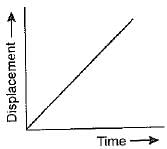
- c)
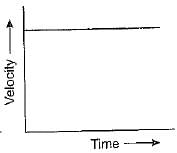
- d)
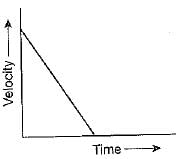
Correct answer is option 'A'. Can you explain this answer?




|
|
Ishan Choudhury answered |
An ant moves from one corner of a hall to the diagonally opposite corner. If the dimension of the hall are 8 m x 6 m, the displacement of the ant is :- a)10 m
- b)14 m
- c)28m
- d)2 m
Correct answer is 'A'. Can you explain this answer?

|
Aniket Yadav answered |
Displacement = hypotenuse
Displacement = (82 +62)1/2 = 10 m
An ant moves from one corner of a hall to the diagonally opposite corner. If the dimension of the hall are 8 m x 6 m, the displacement of the ant is :- a)10 m
- b)14 m
- c)28m
- d)2 m
Correct answer is option 'A'. Can you explain this answer?
|
|
Mainak Chawla answered |
To calculate the displacement of the ant, we need to use Pythagoras theorem.
Pythagoras theorem states that in a right-angled triangle, the square of the hypotenuse (the longest side) is equal to the sum of the squares of the other two sides.
So, the displacement of the ant will be the hypotenuse of the right-angled triangle formed by the two sides of the hall.
Given,
Length of hall (l) = 8 m
Breadth of hall (b) = 6 m
Using Pythagoras theorem,
Displacement of ant = √(l² + b²)
= √(8² + 6²)
= √(64 + 36)
= √100
= 10 m
Therefore, the displacement of the ant is 10 m.
Hence, the correct option is (a) 10 m.
How long would it take to travel 50 km traveling at a speed of 10 km/hr?- a)5 hours
- b)1 hour
- c)3 hours
- d)50 hours
Correct answer is option 'A'. Can you explain this answer?
|
|
Bhaskar Chatterjee answered |
Distance = 50 km
Speed = 10 km/hr
To find: Time taken to travel 50 km
Calculation:
We know that,
Speed = Distance/Time
⇒ Time = Distance/Speed
Substituting the given values, we get
Time = 50/10
Time = 5 hours
Therefore, the time taken to travel 50 km at a speed of 10 km/hr is 5 hours.
Answer: (a) 5 hours
The equations of motion can be derived by using:- a)Distance – time graph
- b)Velocity – time graph for non-uniform acceleration
- c)Displacement time graph
- d)Velocity – time graph for uniform acceleration
Correct answer is 'D'. Can you explain this answer?

|
Pratyush Ranjan answered |
A man is moving with 36 kmph. The time of reaction is 0.9 seconds. On seeing an obstacle in the path, he applies brakes and decelerates at 5 m/s2, the total distance covered before he stops is:- a)19 m
- b)17 m
- c)16 m
- d)18 m
Correct answer is 'A'. Can you explain this answer?
|
|
Arvind Singh answered |
For a body performing motion with uniform speed, the distance-time graph is:- a)Straight line parallel to y-axis
- b)Straight line inclined to the time axis
- c)Straight line parallel to x-axis
- d)Curved line
Correct answer is 'B'. Can you explain this answer?
|
|
Rohit Sharma answered |
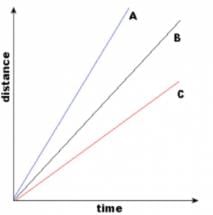
As in uniform motion, the distance time graph would be a straight line, because the equal distance is covered in equal units of time.
A body moving along a straight line at 20m/s undergoes an acceleration of -4m/s2. After two seconds its speed will be- a)-8 m/s
- b)12 m/s
- c)16 m/s
- d)24 m/s
Correct answer is option 'B'. Can you explain this answer?

|
Aaditya Nair answered |
A body performs an accelerated motion, with uniform speed. The motion of body is- a)Linear
- b)Circular
- c)Parabolic
- d)Irregular
Correct answer is 'B'. Can you explain this answer?
|
|
Shounak Chauhan answered |
When a body performs an accelerated motion with uniform speed, its motion is circular. The reason behind it can be explained in the following points:
Uniform Speed:
Uniform speed means the body is moving with a constant speed. It means that the magnitude of the velocity of the body is constant. The direction of the velocity vector can be changed, but the magnitude of the velocity remains constant.
Accelerated Motion:
Accelerated motion means the velocity of the body is changing with time. It means that the magnitude of the acceleration of the body is not zero. The direction of the acceleration vector can be changed, but the magnitude of the acceleration is not zero.
Circular Motion:
Circular motion is a kind of motion in which a body moves in a circular path. In circular motion, the direction of the velocity vector changes continuously, but the magnitude of the velocity remains constant. The direction of the acceleration vector also changes continuously, but the magnitude of the acceleration is not zero.
Conclusion:
When a body performs an accelerated motion with uniform speed, its motion is circular. In this case, the magnitude of the velocity of the body remains constant, but the direction of the velocity vector changes continuously. The magnitude of the acceleration of the body is not zero, and the direction of the acceleration vector also changes continuously. Hence, the motion of the body is circular.
A body starts to slide over a horizontal surface with an initial velocity of 0.2 m/s. Due to friction, its velocity decreases at the rate of 0.02 m/s2. How much time will it take for the body to stop?- a)10 s
- b)15s
- c)1s
- d)5s
Correct answer is option 'A'. Can you explain this answer?
|
|
Anita Menon answered |
Can you explain the answer of this question below:If the upward direction is taken as positive what is the sign of velocity and acceleration when a body falls freely from a height.- A:positive acceleration and negative velocity
- B:positive acceleration and positive velocity
- C:negative acceleration and positive velocity.
- D:negative acceleration and negative velocity
The answer is d.
|
|
Ananya Sharma answered |
Can you explain the answer of this question below:The ______ of a distance versus time graph is speed.
- A:
slope
- B:
y-intercept
- C:
origin
- D:
none of the answers
The answer is a.
The ______ of a distance versus time graph is speed.
slope
y-intercept
origin
none of the answers
|
|
Raghav Chatterjee answered |
When an object moves, it covers a certain distance in a certain amount of time. The relationship between distance and time can be represented on a graph called a distance-time graph.
The Slope of a Distance-Time Graph
The slope of a distance-time graph represents the speed of the object. The slope is defined as the change in distance divided by the change in time. Mathematically, the slope can be written as:
Slope = Change in distance / Change in time
In other words, the slope of the graph gives us the rate at which the distance is changing with respect to time. This rate is the speed of the object.
Interpretation of the Slope
If the slope of the graph is steep, it means that the object is covering a large distance in a short amount of time. This indicates that the object is moving at a high speed.
If the slope of the graph is shallow, it means that the object is covering a small distance in a long amount of time. This indicates that the object is moving at a low speed.
Conclusion
Therefore, the correct answer to the given question is option 'A' - the slope of a distance versus time graph is speed. The slope of a distance-time graph gives us the speed of the object.
Chapter doubts & questions for Motion - Physics for Grade 9 2025 is part of Grade 9 exam preparation. The chapters have been prepared according to the Grade 9 exam syllabus. The Chapter doubts & questions, notes, tests & MCQs are made for Grade 9 2025 Exam. Find important definitions, questions, notes, meanings, examples, exercises, MCQs and online tests here.
Physics for Grade 9
35 videos|66 docs|36 tests
|

Contact Support
|
Free Exam Preparation
at your Fingertips!
Access Free Study Material - Test Series, Structured Courses, Free Videos & Study Notes and Prepare for Your Exam With Ease

 Join the 10M+ students on EduRev
Join the 10M+ students on EduRev
|

|
Create your account for free
Forgot Password
within 7 days!


